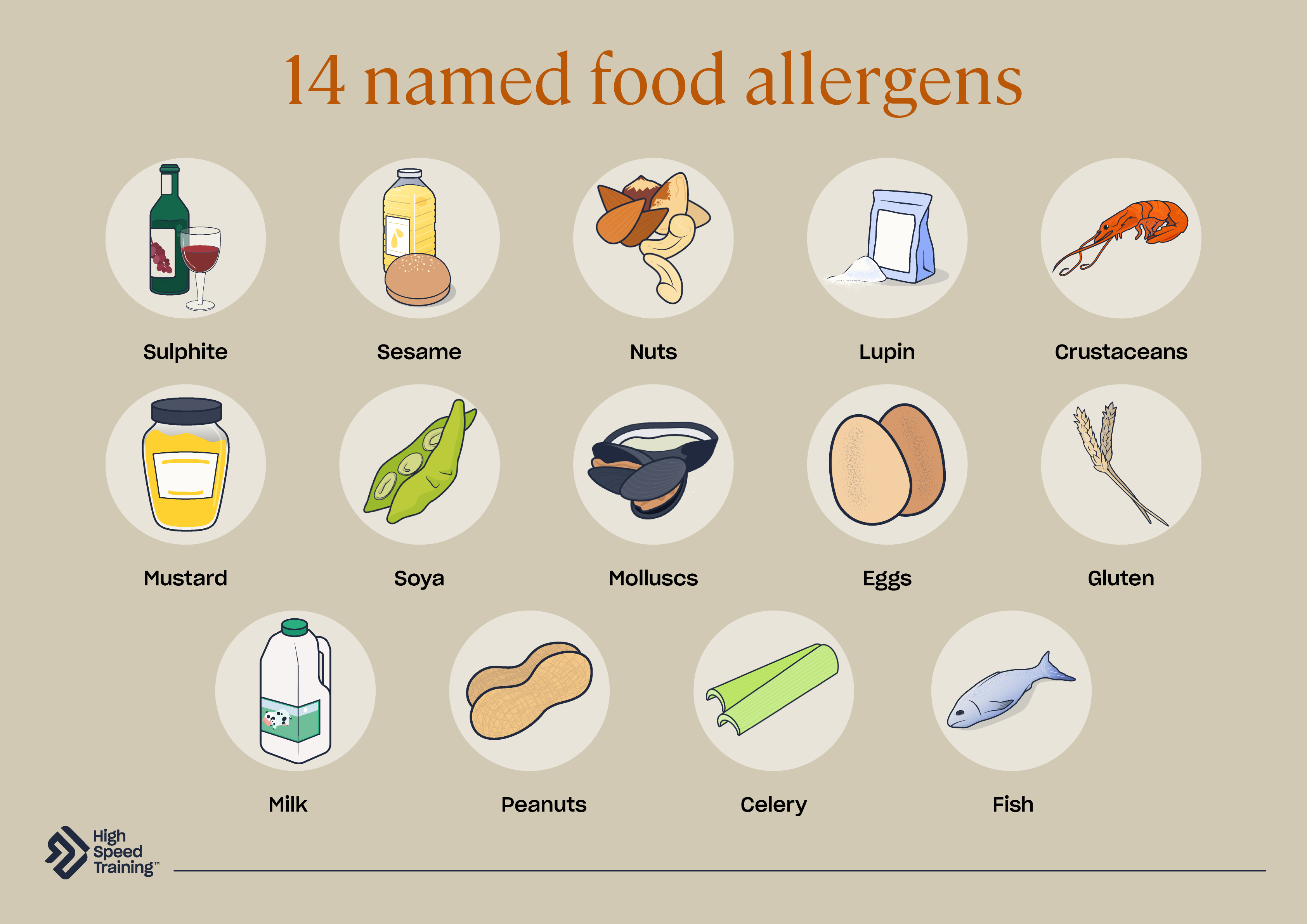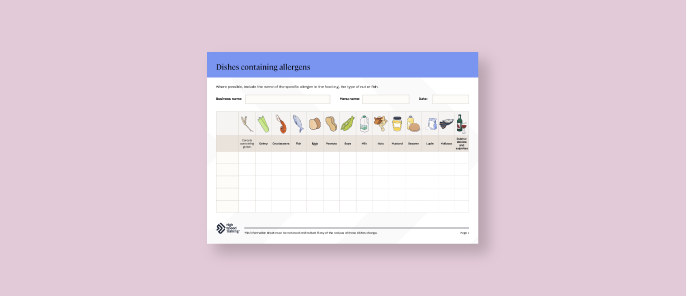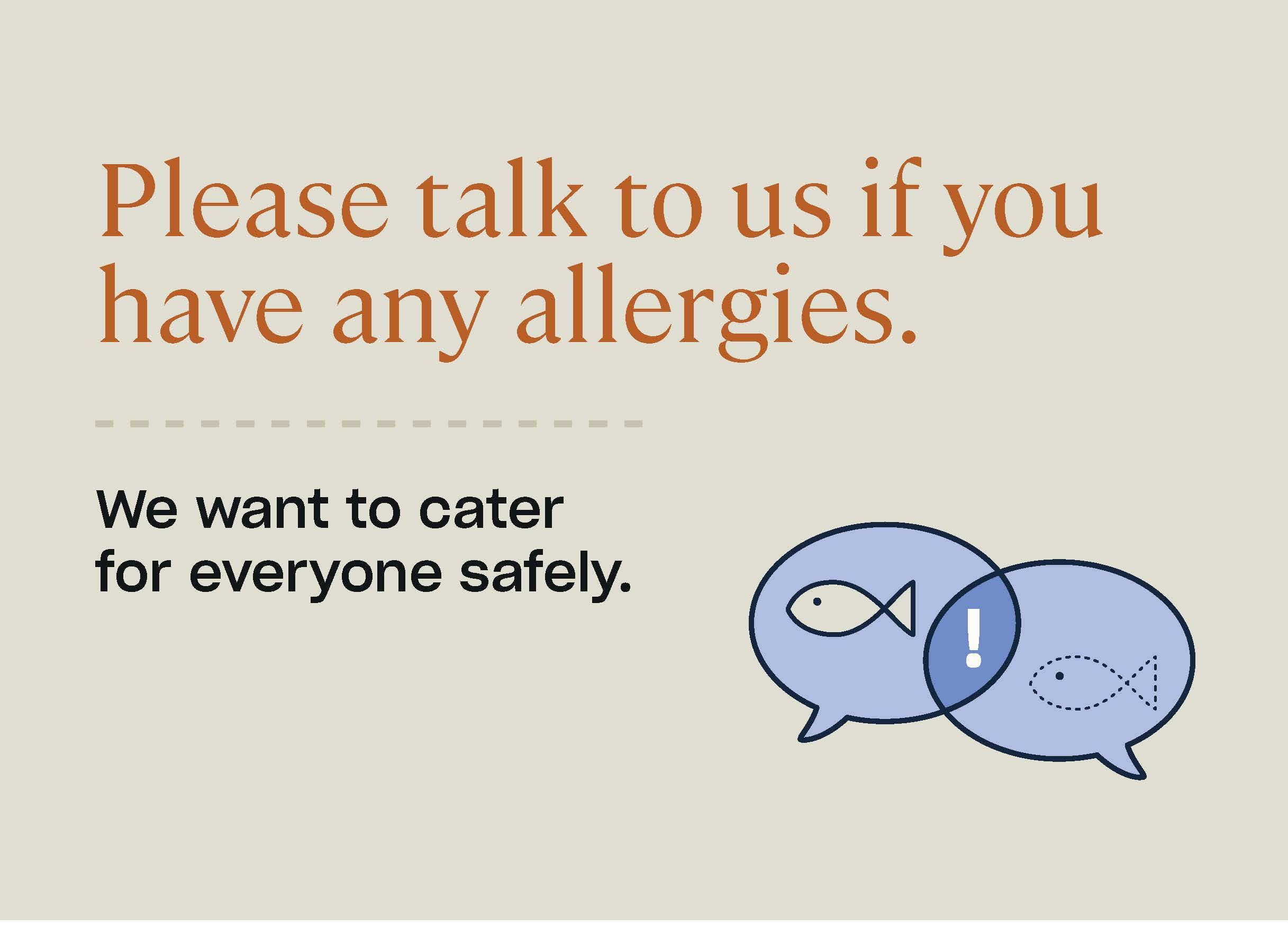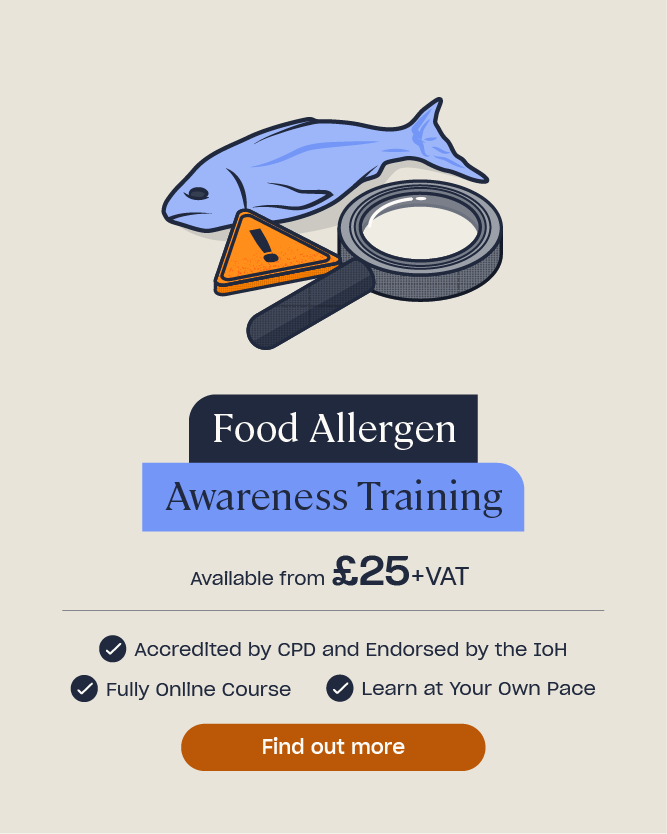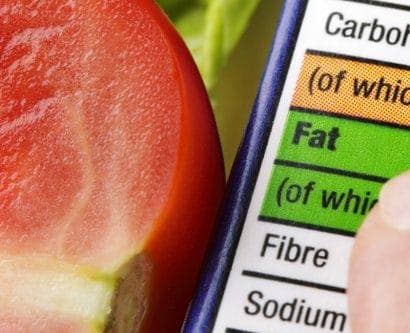Allergen Guidance for the Out-of-Home Sector
Effective and comprehensive allergen management is vital to keeping the public safe. Allergen information allows customers to make better informed decisions and rest easy in the knowledge that they are making safe choices when ordering food. It’s important that allergen information is clear and accurate as the consequences of inadequate allergen labelling can be catastrophic, leading to severe illness and/or death.
In order to support food businesses, the Food Standards Agency (FSA) has issued best practice guidance on providing allergen information to consumers for non-prepacked foods. In this article we will outline what this guidance is and what steps you should consider in order to adhere to best practice. We will also provide a range of allergen resources for you to download and use throughout your business.
What is Non-Prepacked Food?
Non-prepacked food is food that is sold loose, that is to say not in any kind of packaging. It includes, but is not limited to:
- Baked goods at a bakery.
- Meals served at a restaurant.
- Loose meat and cheese at a deli counter.
- Drinks made to order in a coffee shop.

In the past, non-prepacked food and food prepacked for direct sale (PPDS) have been subjected to different allergen labeling requirements. However, an increase in the number of fatal and avoidable allergic reactions has resulted in similar allergen labelling requirements/recommendations for both.
PPDS food is subject to Natasha’s Law which mandates that all food prepacked for direct sale must declare the presence of any of the 14 allergens. You can learn more about PPDS food here.
FSA Guidance on Allergen Information for Non-Prepacked Foods
The FSA guidance on best practice for non-prepacked food is as follows:
- Food businesses must inform consumers if they have used any of the 14 allergens as an ingredient in their food.
- Businesses must ensure that all mandatory food allergen information is accurate and easily accessible by the consumer. This should be easily available in writing and underpinned with a conversation.
The FSA reiterates that this information is particularly important for consumers who have food hypersensitivity such as a food allergy, intolerance or coeliac disease. These hypersensitivities can cause adverse reactions when eating allergens and can result in life threatening anaphylaxis. Following research on how best to convey allergen information, the FSA advises that the most effective method is in writing and supported by a conversation. As such, it’s imperative that staff have the necessary allergen training and a thorough understanding what allergens, if any, are present in the food that you serve.

The guidance from the FSA has been provided so that businesses can adopt best practice, however it is not yet a legal requirement. That being said, campaigners are hopeful that this guidance will eventually become law. In 2017, 18 year old Owen Carey suffered a fatal allergic reaction after allergen information was not adequately provided for him. His family have since campaigned for a change in legislation regarding allergen information which the FSA has publicly supported. Whilst the guidance isn’t currently mandatory, it reflects the parameters of Owen’s Law which seeks to mandate greater standardisation of written allergen information.
For these reasons, it’s advisable for businesses to adopt these best practices irrespective of whether they are a legal requirement or not. If Owen’s Law is ratified then businesses that have already put these practices in place will not have to make any adjustments. This can help to give you an edge against your competitors and save you time further down the road. Moreover, it is a trust signal to customers who suffer from food hypersensitivities that your establishment is trustworthy and willing to take the extra steps so that they too can enjoy a meal out with loved ones.
Practical Steps to Consider for the Out-of-Home Sector
As mentioned, providing adequate allergen information is integral to keeping the public safe and food businesses should already have stringent allergen management practices in place. For example, if you already use an allergen matrix to detail what allergens are present in each dish, then you already have the necessary information to adopt best practice and can focus on how best to convey this to customers.

Nevertheless, there are practical steps that you can take to ensure that you are following the FSA’s guidance. These steps include:
- Assessing current allergen management practices – You should already have effective allergen management practices in place, but it’s important that you assess your current processes and see where improvements can be made. In preparing to provide written information to customers you can assess whether you have the necessary information readily available. For example, if you don’t use an allergen matrix for each dish and instead rely on asking the chef what allergens are present each time someone mentions an allergy, now would be a good time to introduce an allergen matrix for relevant dishes and prominently display it or ensure it can be easily accessed by all staff.
- Updating Staff Training – If staff don’t understand the dangers associated with allergen mismanagement they are less likely to adhere to the necessary guidelines and regulations. As such, it’s imperative that you provide adequate allergen training from a reputable training provider such as High Speed Training. Our Food Allergen Awareness Training provides essential information for food handlers to help them keep customers safe. As part of this training, it’s advisable to talk staff through each dish and the allergens present so that they can confidently convey this to customers. This will facilitate them actively encouraging conversations around allergens as they have the necessary knowledge to help customers make informed decisions.
- Providing easily accessible information – The new FSA guidance reiterates the importance of clear written language to communicate allergen needs. As such, you should take the time to decide how you wish to convey this information and ensure that it’s written clearly and is easily accessible. It’s redundant listing the allergens in a dish if it’s in an illegible font squashed in the bottom corner of your menu. Instead, workshop different ways to present the information such as directly on the menu, a separate menu that only lists dishes containing allergens or a stylised allergen matrix in your business’ branding.
Free Allergen Resources
High Speed Training has a range of free resources that you can use to adopt best practice as outlined above. These include:
Allergen Icons
These can be used to clearly indicate which of the 14 allergens are present in a dish. The icons can be downloaded individually in colour or black and white and placed on menus or display cases where necessary.
Allergen Chart/Matrix
An allergen chart, also known as an allergen matrix, allows you to make a clear record of which foods contain allergens. They are simple to use and act as a visual indicator to staff of which food may or may not be safe for some customers to consume.
Allergen Posters
As mentioned above, written communication should be underpinned by clear communication. Some customers with food hypersensitivities can be hesitant to speak up due to a fear of backlash or past negative experiences. Prominently displaying posters that encourage customers to speak up about their allergies not only creates a welcoming atmosphere, it helps to keep them safe and reassure them that you are committed to their safety.
Food allergies can have severe consequences, however this should not stop those with allergies from enjoying meals out. Providing clear allergen information in writing and training staff so that they can confidently and actively discuss allergens with customers will save lives. The FSA’s updated guidance on best practice reflects calls for improved allergen awareness and by adopting these standards your business can help to keep people safe and be at the forefront of effective allergen management.


